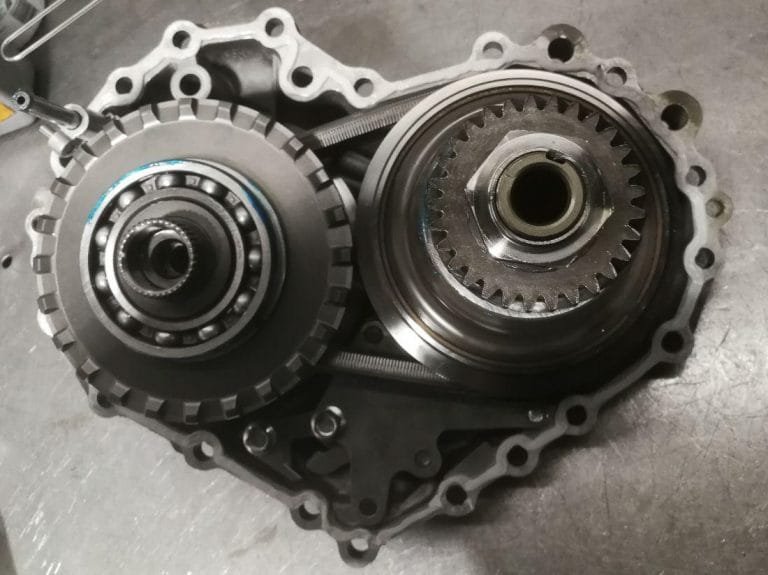If you’ve ever searched for a used Nissan online, chances are you’ve come across warnings about one thing: the CVT transmission. For years, Nissan’s Continuously Variable Transmission (CVT) has been a hot topic of debate among drivers and auto experts alike—praised for fuel efficiency, yet criticized for reliability issues, especially in earlier models. But what about today? Have things changed in 2025?
In this article, we’ll explore whether Nissan has truly turned the corner with its CVT technology. From past lawsuits and technical setbacks to significant engineering improvements, the CVT has undergone an evolution that’s worth a closer look. If you’re considering a 2025 Nissan—whether it’s a Rogue, Altima, or Sentra—you may be wondering: “Is the CVT still a risk, or is it finally worth trusting?”
We’ll break down what CVT really is, what’s changed in recent years, and whether the latest generation of Nissan transmissions delivers on its promise of smooth performance and long-term reliability. Let’s separate fact from fiction—and help you decide if a Nissan CVT is the right fit for your next car.
What Is a CVT and Why Does Nissan Use It?
A Continuously Variable Transmission, or CVT, is a type of automatic transmission that operates without traditional gears. Instead of switching between fixed gear ratios like conventional transmissions, a CVT uses a system of pulleys and a steel belt to provide seamless acceleration across a wide range of speeds. The result? Smoother driving and often better fuel economy.
Nissan has been one of the most aggressive adopters of CVT technology in the automotive industry. Since the early 2000s, the brand has equipped a wide range of its models—such as the Altima, Rogue, Sentra, and Murano—with CVT systems, most notably their proprietary Xtronic CVT. The goal: reduce emissions, improve fuel efficiency, and enhance the driving experience.
But why go CVT when other automakers still favor traditional automatics or dual-clutch transmissions?
The answer lies in efficiency and simplicity. A CVT keeps the engine operating in its most efficient RPM range, leading to lower fuel consumption, especially in stop-and-go traffic. It also eliminates the “shift shock” many drivers feel in geared transmissions, resulting in a smoother ride.
However, the very simplicity of CVTs has drawn criticism. Drivers used to the mechanical feel of gear shifts sometimes describe CVTs as “rubber band”-like or lacking engagement. And in Nissan’s earlier CVTs, there were well-documented issues around overheating, slipping, and premature failure—which we’ll address in the next section.
Still, from a purely engineering and efficiency standpoint, the CVT is a clever solution—and in 2025, Nissan believes it has finally perfected the formula.
Nissan’s CVT Reliability Issues: A Look Back
Nissan’s push for CVT adoption in the early 2000s came with both innovation and unintended consequences. While the brand positioned its Xtronic CVT as a cutting-edge alternative to traditional transmissions, early versions—especially those in vehicles built between 2007 and 2015—were plagued with problems.
Common complaints included shuddering during acceleration, delayed throttle response, overheating, and even complete transmission failure before reaching 100,000 miles. These issues weren’t isolated either; they affected popular models like the Nissan Altima, Sentra, Rogue, and Versa, leading to widespread consumer frustration and a tarnished reputation.
The backlash reached a boiling point when multiple class-action lawsuits were filed in the U.S., accusing Nissan of equipping vehicles with defective transmissions. In several cases, the automaker settled by extending warranties or offering reimbursements for costly repairs—acknowledging the systemic nature of the problem.
So, what went wrong? Most of the issues were linked to early manufacturing flaws and the use of Jatco-supplied CVT units, which struggled under real-world driving conditions like frequent stop-and-go traffic or long highway trips in hot climates.
Nissan initially underestimated the stress CVTs would endure in daily American driving habits. The lack of proper thermal management and insufficient software tuning only added to the problems.
Despite these setbacks, the company took the criticism seriously. By the late 2010s, Nissan began refining its CVT systems, improving internal components, software logic, and cooling mechanisms. But the real transformation didn’t happen until after 2020—when a new generation of CVTs began to show genuine signs of improvement.
In the next section, we’ll explore exactly how Nissan re-engineered its CVT in the latest models—and whether 2025 finally marks a turning point in reliability.
What’s Changed: CVT Improvements from 2022 to 2025
After years of backlash and warranty claims, Nissan knew it had to act. Starting around 2020, and more aggressively from 2022 onward, the company introduced a significantly upgraded version of its Xtronic CVT, focusing on long-term durability, smoother driving, and better heat management.
One of the biggest changes is in hardware design. Newer CVTs, such as those found in the 2023–2025 Rogue, Altima, and Sentra, now feature wider gear ratios that allow for better low-end torque and more efficient highway cruising. Nissan also re-engineered internal components—using improved belt materials and reinforced pulleys to handle higher stress loads without premature wear.
Thermal control was another major focus. Enhanced cooling systems, including additional fluid pathways and more efficient transmission coolers, help keep the CVT running at optimal temperatures—even in hot climates or during extended highway use. This alone addresses one of the key failure points in earlier CVT models.
On the software side, shift logic has been fine-tuned to make acceleration feel more natural. While traditional CVTs can feel “rubbery” or disconnected, the latest Xtronic versions simulate gear shifts to provide a more familiar driving experience—especially when merging or passing on the highway.
Perhaps most importantly, real-world data is now backing up these improvements. Consumer reviews and third-party tests from the last two years show a noticeable drop in CVT-related complaints. Drivers report smoother acceleration, fewer service issues, and increased confidence in Nissan’s newer powertrains.
While it may have taken over a decade, Nissan’s CVT in 2025 finally feels like a transmission you can rely on—not just in theory, but in everyday driving.
Is Nissan CVT Still a Risk in 2025?
Despite clear improvements in design and reliability, some hesitation remains among buyers—and understandably so. Once a vehicle component earns a bad reputation, especially for something as critical as a transmission, it takes time (and proof) to win back trust. So the big question remains: Is the Nissan CVT still a risk in 2025?
The short answer: not anymore—if you’re buying a newer model.
Most of the issues that haunted Nissan’s CVT reputation were tied to older units produced before 2020. In contrast, vehicles from 2022 to 2025 show a dramatic decline in failure rates. Consumer feedback from platforms like Reddit, CarComplaints, and Nissan owner forums confirm that the latest CVTs are holding up well—even after 30,000 to 60,000 miles of daily driving.
In addition, Nissan’s updated warranty coverage offers extra peace of mind. Most 2025 models now come with 5 years or 60,000 miles of powertrain protection—more than enough to cover early-life issues if any do arise. Some class-action settlements even extended this coverage further for older models.
Still, the CVT isn’t perfect for everyone. Enthusiasts who enjoy aggressive driving may find the feel of a CVT too smooth or “disconnected” compared to a dual-clutch or traditional automatic. And while reliability has improved, CVT maintenance (especially fluid changes) remains critical—neglect it, and even the best transmission will fail.
For the average commuter, family driver, or urban user, though, the risk has become minimal. In 2025, Nissan’s CVT is no longer the gamble it once was—it’s a practical, efficient, and surprisingly durable transmission option.
Who Should (and Shouldn’t) Buy a Nissan with CVT in 2025?
While Nissan has made substantial strides in CVT reliability, it’s important to understand that not every driver is the right match for this transmission type. The CVT excels in certain conditions—but it also has limitations that buyers should consider before making a decision.
Who Should Buy a Nissan with CVT:
- Urban Commuters: If your driving involves frequent stop-and-go traffic, the CVT’s seamless power delivery makes for a smoother, more fuel-efficient experience. No shift shock. No lag. Just quiet, effortless acceleration.
- Eco-Conscious Drivers: Nissan’s CVT technology is optimized for fuel economy. If gas mileage is a top priority, models like the 2025 Sentra, Rogue, or Altima with CVT are great choices.
- Everyday Drivers Seeking Low Maintenance: CVTs have fewer moving parts than traditional automatics, which theoretically means fewer mechanical issues—especially in the newest generation.
- Budget-Conscious Buyers: Nissan models equipped with CVTs often come with competitive pricing and better fuel economy, which means lower total cost of ownership over time.
Who Should Think Twice:
- Performance Enthusiasts: If you crave sharp gear changes, engine braking, or sporty driving dynamics, a CVT may feel underwhelming. It’s built for smoothness, not aggression.
- Heavy Towing or Off-Road Users: While newer CVTs are stronger, they’re still not ideal for heavy-duty use. A traditional automatic or CVT designed specifically for towing (like in some Subarus) may be more reliable long term.
- Long-Term Owners Without Maintenance Discipline: CVTs require fluid changes every 30,000–60,000 miles. Skipping this maintenance can significantly reduce the lifespan of your transmission—even on newer models. Most drivers don’t realize how quickly fluid quality can degrade under heat and stop-and-go conditions. If you’re unsure about the condition of your CVT, it’s worth learning how to spot early symptoms.
👉 Learn how to check and correct low CVT fluid levels here – This simple guide can save you thousands in future repairs.
In short, the Nissan CVT in 2025 is a strong choice for the right type of driver. Know your driving style, stick to regular maintenance, and this once-feared transmission might just exceed your expectations.
Conclusion: Has Nissan Finally Fixed Its CVT Problems?
For years, Nissan’s CVT transmissions were the Achilles’ heel of an otherwise reliable brand. Stories of early failures, expensive repairs, and class-action lawsuits left many drivers wary of ever trusting Nissan again. But the automotive world evolves—and so has Nissan’s CVT.
In 2025, the narrative is changing. With hardware upgrades, smarter software, improved cooling systems, and years of real-world testing, the Xtronic CVT is no longer the ticking time bomb it once was. Models like the 2025 Rogue, Sentra, and Altima now show strong reliability ratings, with far fewer complaints and significantly better performance.
That doesn’t mean CVTs are perfect—or right for everyone. But for daily commuters, city drivers, and those looking for efficiency over sportiness, Nissan’s CVT in 2025 is a smart, practical, and safe choice—as long as you stay on top of basic maintenance.
So, is it finally time to stop fearing the CVT badge on a Nissan? If you’re shopping for a 2025 model, the answer is a confident yes.

